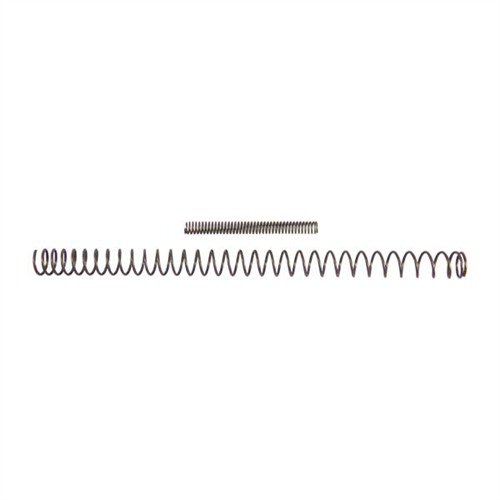Highly recommended for both heavy recoiling 1911s and also 1911s with shorter than Gov't Model slides. The Extreme Service firing pin stop is CNC machined out of an oil-quenching tool steel that was chosen for a balance of impact and wear resistance, with a GI hardness is 44-50Rc. The Extreme Service FPS is made .482" wide so it can be fitted to your slide and extractor to prevent extractor "clocking". It has chamfered fitting pads on each side to make your job easier and the FPS fit better into the slide. It has a 3/64" radius machined on the bottom rear corner and a 3 degree angle at the top rear face, both of which act to take away mechanical advantage from the slide when it's cocking the hammer, by moving the contact point to the bottom of the hammer face. This will retard the initial movement of the slide, slowing its rearward speed a little. This will allow short length 1911s to have less imbalance between the slide's speed and the magazine spring's force on the last couple of rounds, reducing the bolt over base type of malfunctions caused by the slide outrunning the magazine spring.
Fermapercussore Extreme Service 1911: La scelta ideale per prestazioni superiori!
Consigliato per 1911 con rinculo pesante e per quelli con scivoli più corti rispetto al modello Gov't. Il fermapercussore Extreme Service è realizzato con lavorazione CNC in acciaio per utensili trattato a olio, scelto per un equilibrio tra resistenza all'impatto e usura, con una durezza GI di 44-50Rc.
Caratteristiche principali:
- Dimensioni: largo .482", progettato per essere adattato al tuo scivolo e all'estrattore per prevenire il "clocking" dell'estrattore.
- Pads di adattamento smussati su entrambi i lati per facilitare l'installazione e migliorare la vestibilità nel scivolo.
- Raggio di 3/64" lavorato nell'angolo posteriore inferiore e angolo di 3 gradi sulla faccia posteriore superiore, che riduce il vantaggio meccanico dello scivolo durante l'armamento del cane.
- Ritarda il movimento iniziale dello scivolo, rallentando leggermente la sua velocità posteriore.
- Consente ai 1911 di lunghezza ridotta di avere meno sbilanciamento tra la velocità dello scivolo e la forza della molla del caricatore negli ultimi colpi, riducendo i malfunzionamenti di tipo bolt over base causati dallo scivolo che supera la molla del caricatore.
Scopri il fermapercussore Extreme Service 1911 e migliora le prestazioni della tua arma!










